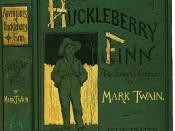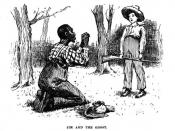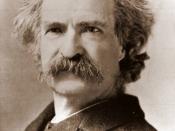"The Adventures of Tom Sawyer" was published in 1876 and in the same year, Mark Twain began its sequel, "The Adventures of Huckleberry Finn", which he called "another boy's book." He and William Dean Howells, the editor of Atlantic Monthly, had a debate about Tom Sawyer that centered around the idea of having Tom "drift into manhood." Twain later gave up the idea of carrying Tom beyond boyhood; instead, he chose to develop the character of Huckleberry Finn.
Twain seemed to take little interest in the Huck Finn book and wrote it "more to be at work than anything else." He set it aside for four years. In 1880, he took it out and wrote a little more, only to abandon it once again. He firmly believed in the theory of unconscious composition and that a book should write itself and not be forced; the book, which he referred to as Huck Finn's Autobiography, refused to comply.
In the summer of 1882, he was possessed with a burst of literary energy that was more intense than anything he had experienced for a number of years. It is possible that this was due to the visit to the Mississippi that he had made earlier in the year. No matter the reason, Twain felt rejuvenated and again turned to the writing of Huckleberry Finn. By the summer of 1883, he wrote to his publisher, "I've just finished writing a book and modesty compels me to say its a rattling good one too." Others have judged it as more than rattling good. Ernest Hemingway remarked that "all modern American literature comes from one book by Mark Twain called Huckleberry Finn."
Because Huck tells his story himself, the stylistic richness is immeasurably deepened by the rhythms, intonations, and choice of words...


